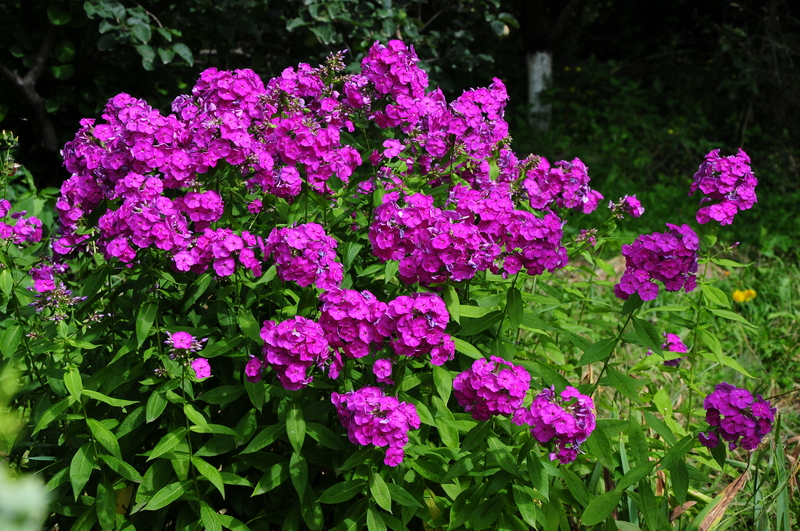Essential Tips for Growing Orchids Like a Pro
Posted on 15/08/2025
Essential Tips for Growing Orchids Like a Pro
Orchids are some of the most elegant and rewarding plants you can add to your home or garden. Their exotic blossoms and diverse varieties captivate flower enthusiasts everywhere. However, despite their beauty, successfully growing orchids can be a challenge--unless you understand their unique needs. In this comprehensive guide, you'll learn all the must-know tips and tricks for growing orchids like a pro, ensuring lush foliage and vibrant flowers for years to come!
Understanding Your Orchid: Know Your Species
Every orchid is different. With over 25,000 naturally occurring orchid species and over 100,000 hybrids, understanding your orchid's specific requirements is vital for thriving plants. Some of the most popular types for home cultivation include:
- Phalaenopsis (Moth Orchid) - Famous for its long-lasting blooms and excellent for beginners.
- Cattleya - Known for its vibrant, fragrant flowers.
- Oncidium - Often called "dancing lady" orchids for their flower shape.
- Dendrobium - Diverse in growth patterns and flower types.
- Vanda - Requires more light and humidity, with showy, long-lasting flowers.
Before you start, identify your orchid species and research its native habitat preferences. This knowledge will form the basis of all essential care tips.

Choosing the Right Pot and Potting Mix
Orchids have unique root systems that require good aeration and drainage. Most orchids are epiphytes--meaning they grow on trees in the wild rather than in soil. Here's how to pot like a pro:
- Use a transparent or slotted pot to allow light to reach the roots and provide adequate airflow.
- Select the right mix: Avoid regular potting soil. Instead, opt for an orchid-specific mix containing bark, perlite, charcoal, or sphagnum moss. This promotes drainage and maintains moisture without waterlogging.
- Repot every 1-2 years or when the potting medium breaks down and retains too much water.
Top Potting Tips:
- Never let your orchid sit in water--this causes root rot.
- Keep roots slightly cramped for better blooming (orchids bloom better when they feel consolidated).
- Always sterilize tools before trimming or repotting to prevent the spread of disease.
Mastering Orchid Watering Techniques
Improper watering is the most common reason for failed orchid growth. Learning to water your orchid correctly is essential for healthy roots and beautiful flowers.
How Often Should You Water Orchids?
- Water once a week during the growing season (spring and summer).
- Reduce watering in winter, as orchids go into a dormant period.
- Check the potting mix--if it feels dry an inch below the surface, it's time to water.
- Observe the roots: Healthy roots are firm and green; shriveled or brown roots indicate under or overwatering.
Tip: Water early in the day to allow excess moisture to evaporate by night, reducing the risk of rot and fungal issues.
Providing Optimal Light for Orchid Growth
Light is one of the most critical factors for successfully growing orchids. Each species has its own preference, but here are essential light tips:
- Phalaenopsis: Bright, indirect light; avoid direct sunlight.
- Cattleya and Vanda: Need more light, but still not full sun, as burning can occur.
- Place orchids near an east or south-facing window, using sheer curtains to diffuse harsh light.
If you notice dark green leaves and no blooms, your orchid may need more light. Reddish or yellow leaves indicate too much sun.
Supplementing with Grow Lights
- Use full-spectrum grow lights if ideal natural lighting isn't available.
- Keep lights on for 12-14 hours daily for most indoor orchids.
Humidity and Temperature Requirements
Orchids thrive in humid environments. Ideally, maintain humidity levels between 50% and 70% for happy orchids.
- Use a humidity tray: A shallow tray filled with gravel and water beneath the pot will help raise local humidity.
- Mist orchids in the morning, but avoid misting the flowers directly.
- Group orchids together to create a microclimate and stabilize humidity.
Temperature Tips
- Daytime: 65-80?F (18-27?C)
- Nighttime: 55-65?F (13-18?C)
- Many orchids require a slight nighttime temperature drop to trigger blooming.
Feeding Your Orchids: Fertilizing Like a Pro
Orchids are light feeders, so it's important not to overdo fertilizing. However, regular, appropriate feeding is crucial for strong growth and abundant blooms.
- Use a balanced orchid fertilizer (20-20-20 or similar) diluted to half or quarter strength.
- Feed every 2-3 weeks during the growing season and monthly during dormancy.
- "Feed weakly, weekly" is a common orchid grower's mantra.
- Flush the potting mix with plain water monthly to prevent salt buildup.
Encouraging Orchids to Bloom
One of the joys of orchid care is seeing your plant flower again. Don't be discouraged if it doesn't happen right away--follow these pro orchid blooming tips for success:
- Maintain correct temperature differences between day and night to trigger blooms.
- Ensure your orchid isn't root-bound or in an exhausted potting mix.
- Increase humidity and provide ample, indirect light.
- Be patient! Some orchids bloom just once a year, and a healthy plant will eventually reward you.
Dealing with Orchid Pests and Diseases
Even the most meticulous orchid grower can encounter pests or disease. Early detection and prompt action are essential.
Common Orchid Pests
- Mealybugs: White, cottony masses on leaves and stems.
- Spider mites: Fine webbing, stippling on the leaves.
- Scale insects: Brown or white lumps on leaves and stems.
- Aphids: Clusters of tiny green or black insects on new growths.
Managing Orchid Diseases
- Root rot: Caused by overwatering--remove affected roots and repot in fresh, dry medium.
- Leaf spots/blights: Trim off affected areas and avoid wetting the leaves.
- Use rubbing alcohol or horticultural oils to control light infestations by pests.
- Maintain excellent air circulation to deter fungal infections.
Always isolate new or sick plants to prevent spreading problems to your collection.
Pruning and General Maintenance
Proper maintenance ensures continued health and vigor throughout the orchid lifecycle:
- Prune dead or yellow leaves regularly.
- After flowering, cut the spike an inch above the node for Phalaenopsis to encourage reblooming.
- Sterilize pruning tools before use.
- Remove old, degraded potting material during repotting.
- Keep a close eye on the roots--healthy roots spell healthy orchids!
Propagating Orchids Like a Pro
Once you've mastered orchid care, why not multiply your collection? Propagating orchids can be a rewarding project. The most common methods include:
Division
- Best for sympodial orchids (like Cattleya and Oncidium).
- When repotting, gently separate pseudobulbs, ensuring each division has at least 3-4 healthy bulbs.
- Plant divisions in fresh potting mix and keep slightly drier until new growth appears.
Keiki (Baby Plant) Method
- Some orchids, especially Phalaenopsis and Dendrobium, naturally produce keikis.
- Once the keiki develops roots 2-3 inches long, gently remove and pot separately.
With proper propagation techniques, you can enjoy the satisfaction of nurturing new orchids from your own thriving collection!
Frequently Asked Questions about Orchid Growth
Why are my orchid's leaves turning yellow?
Yellowing leaves often indicate overwatering or old age. Remove only the affected, declining leaves. Ensure your watering schedule and drainage are appropriate.
My orchid won't flower. What should I do?
Focus on increasing light (but not direct sun) and ensuring nighttime temperatures are at least 10?F cooler than day. Avoid overfertilizing and check that roots are not crowded or rotted.
How do I revive an orchid with no roots?
Remove all dead, mushy roots and place the orchid in a humid, bright environment. Mist the plant regularly and wait for new root growth before repotting into fresh medium.

Final Pro Tips for Growing Stunning Orchids
- Patience is key--orchids grow slowly and require consistent care.
- Observe, don't obsess--learn your plant's normal patterns and adjust care as needed.
- Document your experiences, noting successes and challenges in an orchid diary.
- Join orchid societies or online forums for invaluable support and advice.
Conclusion
With the right approach, growing orchids like a pro is within anyone's reach. Understanding your orchid's specific needs, creating the right environment, and practicing attentive care will reward you with spectacular blooms and thriving plants year after year. Remember, each orchid is unique--so enjoy learning and celebrating every step of your orchid-growing journey. Happy growing!

